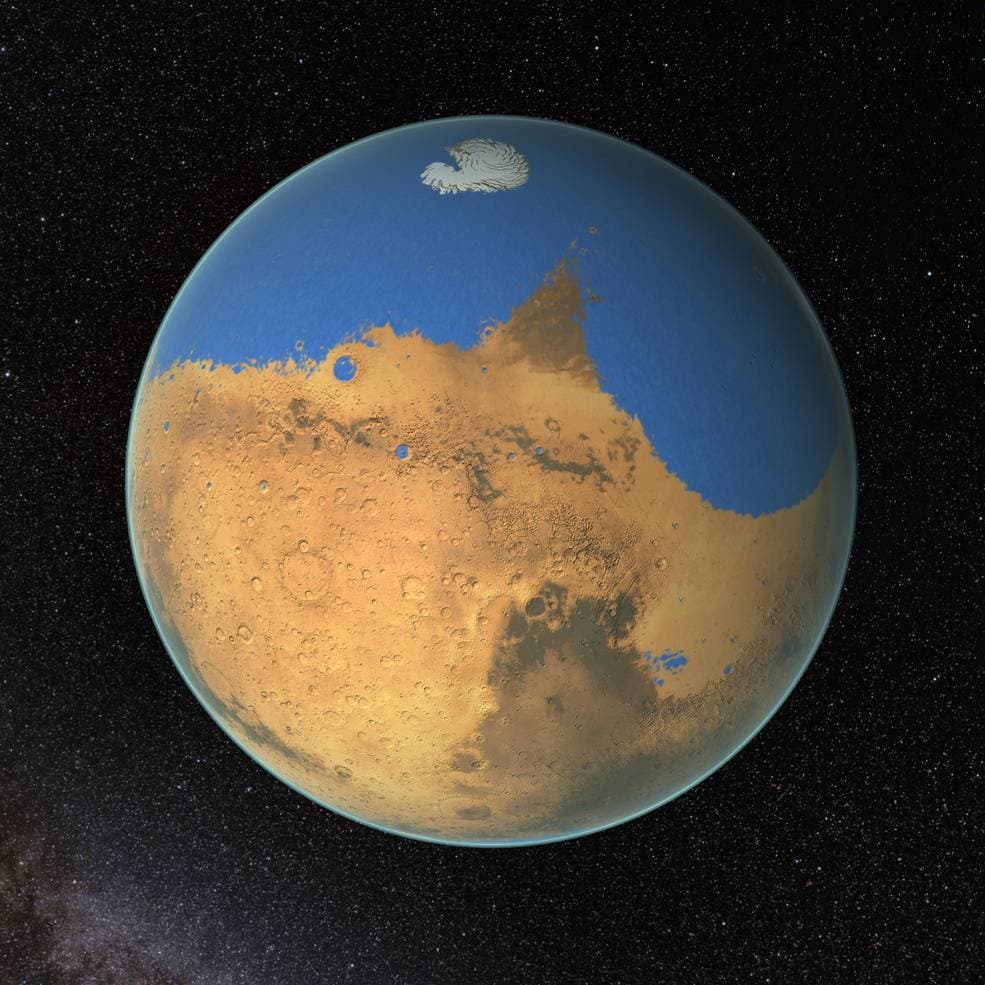Mars may have stayed warm enough for liquid water during its drying time thanks to bursting methane bubbles. According to researchers at the University of Chicago, their simulation suggests such a scenario could have possibly released enough of the potent greenhouse gas to keep Mars warmer for a tad longer before it succumbed to its inevitable barren state we all know today.

For about the first billion years of its 4.6-billion-year history, Mars must have looked radically different. During this period, Mars still had a magnetic field and thick atmosphere that sheltered the surface from the sun’s rays and radiation. We also know for sure it used to harbor flowing water in streams and rivers which formed deltas and discharged into large lakes, quite possibly in oceans too. But then came the Hesperian period during which Mars underwent irreversible climate change after the planet’s core cooled. Without a dynamo, there was no more magnetic field and the atmosphere became so thin it’s almost as non-existent as around Mars’ orbit.
There is some reason to believe, however, that Mars didn’t turn off the heat immediately after it entered this bleak, dry period which permanently turned it into an inhospitable, icy world. When the Curiosity rover first touched down on Mars in 2012, NASA scientists discovered that core samples drilled from Gale Crater indicated there were some lakes there around 3.5 billion years.
Essentially, these rocks suggest Gale Crater still had liquid water during the Hesperian period when Mars went from wet to chillingly dry. Ever since the discovery was reported, scientists have been puzzled. One viable explanation that accounts for this inconsistency is that methane pockets exposed by thawing could have released enough greenhouse gases to keep the planet warmer than otherwise.
The team led by Edwin Kite, a planetary scientist at the University of Chicago, ran the physics through a climate model and found such a thing is possible if Mars’ axial tilt suddenly changed. Indeed, Mars’ tilt on its axis can shift dramatically unlike Earth’s due to its relationship with Jupiter’s orbit. Scientists estimate Mars’ shift in tilt could have been up to 20 degrees — enough to radically change the environment around the planet. Once ice-covered portions on the Martian surface could have now become fully exposed to the sun. The retreating ice would have then freed pockets of methane, allowing the gas to escape into the atmosphere, the authors reported in the journal Nature Geoscience.
Methane is 25 times more potent, molecule per molecule, at trapping heat than carbon dioxide. When the researchers ran the numbers, they found that if enough of the gas escaped, significant warming would have occurred. Eventually, the sun’s rays would have broken down the methane from the atmosphere but, according to Kite and colleagues, the event would have still bought hundreds of thousands of years. That’s just enough to explain the Gale Crater anomaly. We might learn more once the ExoMars Trace Gas Orbiter which arrived at Mars last fall begins measuring the red planet‘s atmosphere in early 2018. If it can detect at least some faint hints of methane, the idea of a burping Mars will suddenly become a lot more interesting.
Concerning the prospect of life on Mars, these findings don’t change too much. It if was ever present on Mars, life would have most certainly seen its best days far before the period modeled by University of Chicago scientists. Regardless of that, it’s always interesting to learn about what may have happened billions of years ago, on an alien planet to boot, but also might happen to our own planet. Man-made climate change on Earth risks releasing huge methane reserves of 1,700 gigatons or 1.7 trillion tons of carbon from the frozen permafrost in which they’re currently trapped, with potentially damning consequences.


